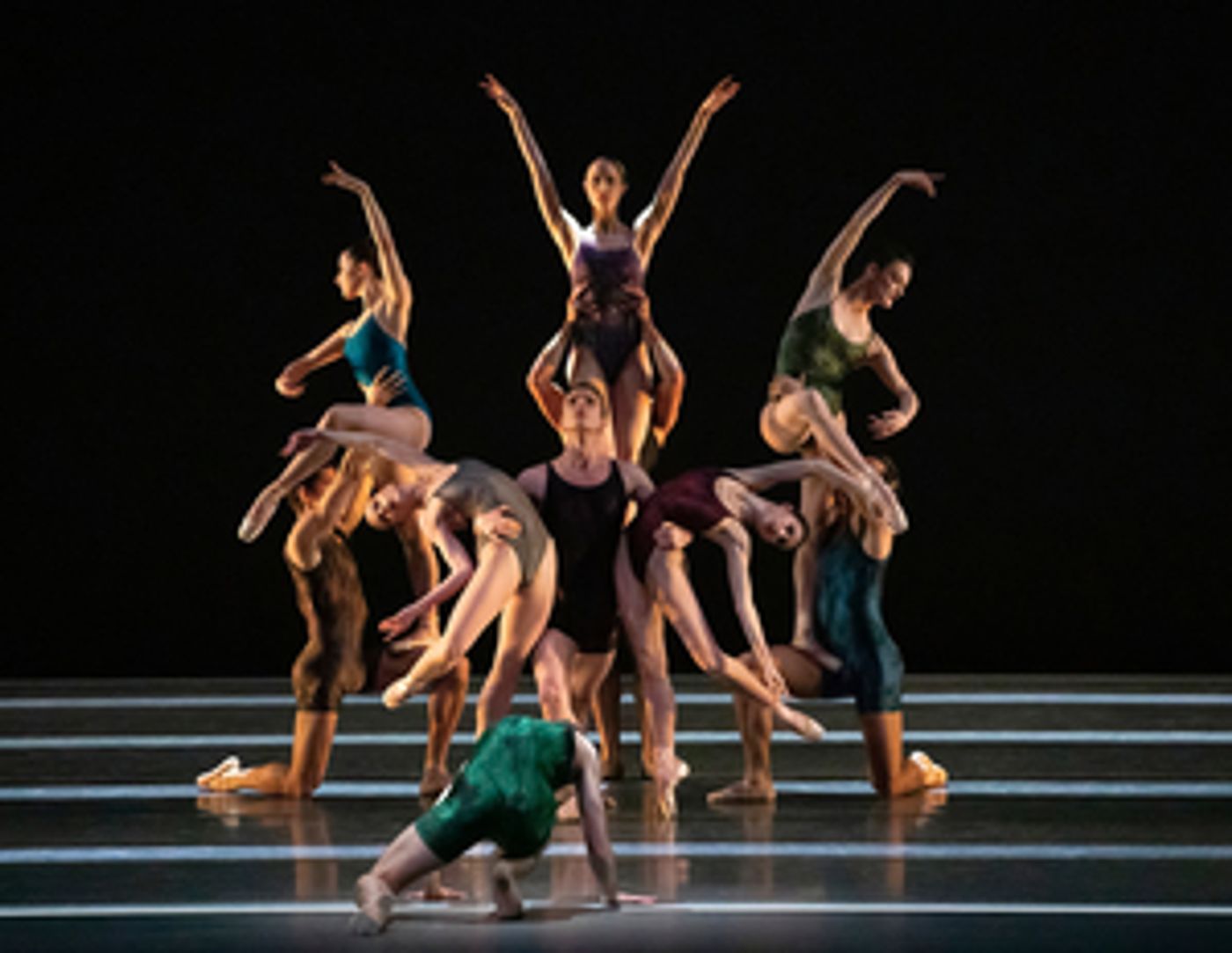BWW Dance: Strange Programming Makes a Daffy Afternoon at City Ballet

Erin Baiano; photographer
Curation, aka the art of deciding which pieces will appear on a program, does not receive much attention at New York City Ballet. Strange, since it can make or break an event. One would not serve a lunch of all cheeses-the very thought of it makes me queasy; similarly, one should not present an afternoon of legato pieces. Dance curation is about composing as palatable a meal as possible for the audience to digest with their eyes, which is why Saturday's February 8th matinee at the Koch Theatre was a bizarre affair.
In Polyphonia, one can see that Christopher Wheeldon is a fan of The Four Temperaments, but where Balanchine displayed eye-tickling wit, Wheeldon is ponderous and humorless. Polyphonia is a collection of posing, canon, and unison partnering, revealing little about the relationship between men and women. Its central duet, danced at this performance by Unity Phelan and Peter Walker, held moments of acrobatic appeal, particularly during its crab walk, which evolved into an assisted backward walkover. The overriding effect was of an artist taking himself too seriously to music---ten selections from Ligeti's oeuvre played ably by Alan Moverman and Stephen Gosling--that droned on aimlessly.
Justin Peck's Bright was well matched with Mark Dancigers' composition of music that belonged to a midi-file scored video game, which begged the question: How does one choreograph to that? Peck created a suite of "lyrical-jazz" suitable for any competition dance event but grossly inappropriate for City Ballet's repertory.
Jerome Robbins' Opus 19/The Dreamer reveals as much about him as it did about this performance's leading man, Taylor Stanley. Robbins, haunted by his homosexuality, yearned for a "normal" relationship. In a bit of wish fulfillment, The Dreamer's leading figure finds contentment in the hands of his "ethereal other half; a woman. This conclusion comes off unconvincingly after observing the ballet's opening portrait of a man at odds with himself.
Stanley--whose technique, facility, and dancing are nothing short of brilliant--looked stiff while executing the work's classical ballet sections. This awkwardness evaporated whenever he bit into Robbins' evocation of psychological angst, a collection of folk steps and modern gestures. One could easily argue that Stanley was acting out the distress of his character. However, that explanation falls flat after taking into account that--much like Paloma Herrerra during her extended ennui phase at American Ballet Theatre--Stanley has looked bored with ballet for a while.
His partner, Lauren Lovette, with whom he is physically well matched but temperamentally ill suited, exasperated this feeling. She is all-flash to his smolder, and if she was meant to play the embodiment of this man's salvation, then Stanley was the wrong man. She danced prettily, though without depth, as the piece came to its frustratingly obvious end. Happily, the music, Prokofiev's Violin Concerto No. 1 in D Major, was fantastically played, with Arturo Delmoni delivering a masterclass in a virtuoso performance on the violin solo.
Alexei Romansky's new ballet completed the uneven curation. Voice is a collection of solos for women who dance to recordings of notable women speaking. The most effective patch of choreography came during Forough Farrokhzad's section with Mary Thomas MacKinnon--an exciting performer whose dynamic dancing hailed the arrival of a new star, easily tossing off four pirouettes into a double garougillade, followed by a few saut de basques and cabrioles, then stopping on a dime to balance as her left tendu devant ronde de jambe'd into a gorgeous attitude derrière.
It did not matter that I could not understand Farrokhzad's Farsi because Ratmansky did not embed the meaning behind each speakers' words into the choreography. In MacKinnon's dancing, we saw a woman who was either hunting for something or attempting to push her way through a crowd. I doubt that Farrokhzad spoke of this; without program notes, how could I possibly know? In the Nina Simone section, we heard her speak of what she endured after singing Mississippi Goddam, of the need to be loved and the yearning for freedom. None of this showed up in the choreography, something that strikes me as offensive, particularly during Black History Month.
Between each solo, a chorus of four men wiped the stage clean with one male breaking off to perform repetitive turns such as a menage of coupé jetés or brisé volés while traveling backwards, upstage. I once observed a woman slowly slide down into "the splits" at a strip club, much to her audience's glee. It was a gimmick with little purpose other than to impress. Perhaps that was the point of these non-sequiturs; on paper, Voices is about women. How appropriate then that its men were reduced to furniture movers and nuance-less entertainment.
Listening to women speak with humdrum casualness about their occupations is the antithesis of musicality. Overlay Voices with any music, and its effect will be the same as what we saw in performance. Some have written that this apes Merce Cunningham's ideas about chance. That is a logical thought if one is writing about modern work which is not as bound to music as ballet. That is the primary flaw of Voices as a concept. I am borrowing from Jennifer Homans' and her statement that "Ballet is dead"; all dance is dead if the music does not move you or wed itself with the movement. Voices was dead on arrival. It gives me no pleasure to write of Ratmansky in this way, but then even Balanchine had Electronics.
Videos

